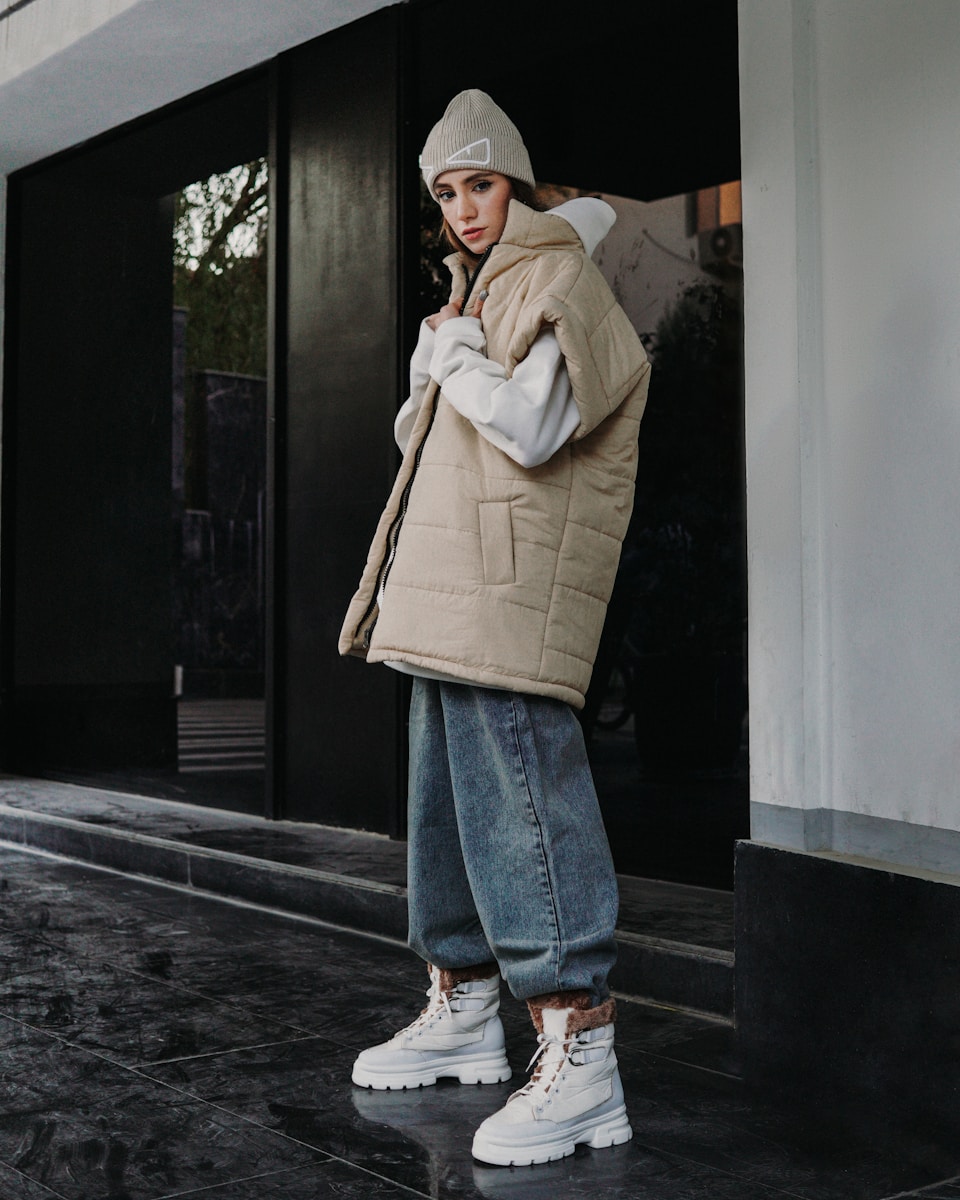Denim is one of the most iconic fabrics in the world, an enduring symbol of casual, effortless style that has become a wardrobe staple for people of all ages, cultures, and backgrounds. Originally designed as durable workwear, denim has evolved through the years, gaining recognition and transforming into high-fashion runway pieces. From its humble beginnings in the late 19th century to its prominent role in modern fashion, denim has undergone a fascinating journey. This essay will explore the history of denim, tracing its evolution from tough workwear to a global fashion phenomenon.
The Origins of Denim: Workwear for the American Worker
Denim’s roots can be traced back to the mid-1800s in Europe. The fabric itself, a durable cotton twill weave, was used for a variety of purposes in different parts of the world. However, it was not until the California Gold Rush that denim, as we know it today, began to gain significant recognition in the United States.
The first significant milestone in denim’s history came in 1853 when Levi Strauss, a German immigrant, arrived in San Francisco. Strauss initially sold dry goods to miners, but as the demand for durable clothing grew, he saw an opportunity to create a product specifically designed for the grueling work environment. Working with tailor Jacob Davis, Strauss developed a pair of pants made from sturdy denim fabric, reinforced with copper rivets at key stress points like the pocket seams. This innovation made the pants significantly more durable than previous work garments, and they quickly became popular among miners and laborers. The pants, known as “blue jeans,” were born, named after the indigo dye that gave the fabric its distinctive blue color.
The use of denim spread beyond the gold mines as other laborers, such as cowboys, farmers, and railroad workers, adopted these durable pants. The material’s strength and comfort in harsh working conditions made it an essential part of the American worker’s wardrobe. Denim’s functional role as workwear persisted for several decades, but by the mid-20th century, it began to take on new significance.
Denim and the Rise of Youth Rebellion
By the 1950s, denim had become entrenched in American culture, but it was no longer solely associated with the working class. It began to be adopted by the youth, particularly teenagers, who were seeking to express their rebellion and defiance against traditional societal norms. Denim jeans became a symbol of youth culture, individuality, and freedom. Hollywood played a pivotal role in cementing denim’s connection with rebellion, with stars like Marlon Brando and James Dean wearing denim jeans in films like Rebel Without a Cause (1955) and The Wild One (1953).
As denim continued to gain popularity, it evolved beyond just pants into a full array of clothing items, including jackets, shirts, skirts, and even dresses. By the late 1960s and early 1970s, denim had become a key element of the counterculture movement, embraced by hippies and anti-establishment groups. The fabric was symbolic of the youth’s rejection of conventionality and conformity. With its rugged, lived-in appearance, denim also became a representation of social change, a material that was closely associated with freedom, individuality, and a more relaxed lifestyle.
Denim’s Transition to High Fashion: The 1980s and 1990s
Denim’s popularity continued to grow through the 1970s and 1980s, and by the 1990s, it had solidified its status as both casual wear and a high-fashion item. During the 1980s, denim took on a more polished and structured form, making its way into the office and other professional environments. This was the decade when designer denim brands like Calvin Klein, Guess, and Tommy Hilfiger began to create high-end denim lines that catered to a more affluent audience. The premium denim trend emerged, with higher quality fabrics, intricate stitching, and designer branding elevating the fabric from its humble roots as workwear to a luxury product.
The 1980s also saw the rise of denim in the form of acid-wash jeans, a trend that became synonymous with the era’s rebellious, rock-and-roll spirit. Acid-washed denim, which involved a bleaching process to give the fabric a faded, distressed look, was embraced by both fashion-forward celebrities and everyday consumers. This era of excess and bold experimentation in fashion set the stage for the 1990s, which witnessed the rise of even more denim subcultures.
In the 1990s, denim became a defining element of grunge fashion. Inspired by the Seattle music scene, grunge stars like Kurt Cobain and Courtney Love wore baggy, oversized denim paired with flannel shirts and band t-shirts. Denim was used in a more relaxed, unkempt way, reflecting the anti-consumerist and anti-fashion ethos of the grunge movement. At the same time, the 90s saw the rise of more tailored, sophisticated denim looks, with high-waisted jeans and minimalistic cuts dominating the runways. Denim was now not just for rebels or workers, but a versatile and chic material for both casual and formal occasions.
The Runway: Denim’s High-Fashion Transformation
By the late 1990s and early 2000s, denim had firmly established itself as a major player in the world of high fashion. Designers began to experiment with denim in a variety of ways, turning the once humble fabric into an integral part of runway collections. Denim jackets, skirts, and even dresses began to appear in the collections of top designers like Jean-Paul Gaultier, Versace, and Dolce & Gabbana. These designers took denim’s rugged image and reworked it with luxurious fabrics, embellishments, and innovative cuts, making it a fabric fit for the most glamorous of runways.
One of the most significant moments in denim’s high-fashion journey came in 2001, when luxury fashion house Chanel included a full denim collection in its spring/summer show. The collection featured everything from tailored denim suits to denim skirts and accessories, proving that denim could be both elegant and fashionable. Other designers followed suit, and denim was soon a regular feature in haute couture collections.
In the 2010s, denim underwent yet another transformation, as fashion houses began to embrace sustainability. As the fashion industry grappled with its environmental impact, denim manufacturers sought ways to create eco-friendly denim. Brands began to experiment with organic cotton, waterless dyeing techniques, and recycled materials. Sustainable denim lines became more popular, and denim was once again redefined, this time as a product of innovation and responsibility.
The Modern Denim Scene: A Global Fashion Staple
Today, denim is a ubiquitous part of the global fashion landscape. It is seen on the runways of top designers and in the closets of everyday people alike. From high-end designer jeans to affordable fast-fashion versions, denim continues to be a versatile and enduring fabric. Denim’s evolution from durable workwear to luxury runway fashion demonstrates its adaptability and universal appeal. Whether in the form of casual skinny jeans, wide-leg trousers, or stylish denim jumpsuits, denim has transcended its utilitarian origins to become a symbol of fashion-forward thinking and timeless style.
Denim is now celebrated not only for its practicality but for its ability to represent different cultural and subcultural identities. It is a fabric that speaks to rebellion, individuality, and creativity, and as such, continues to inspire designers, artists, and fashion lovers all over the world. Denim has become more than just a clothing material—it is a canvas for personal expression, an emblem of inclusivity, and a testament to the power of fashion to shape our collective identity.


